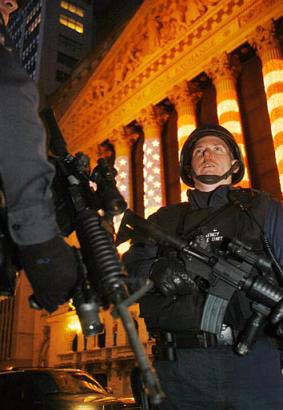My friend Michael recently launched Konigi, a site for researching websites. It’s perfect for those times when you’re designing a feature and you want to review all the prior art. There’s screenshots and screencasts and a bunch of community features, but Michael has a lot more interesting things planned, it’s worth keeping an eye on.
Category: Design
-
Digital Service Design: A User Story, and An Overview
Here’s a story of how someone might wind up needing this book, and a one-page overview of it all.
-
Alignment Diagrams as Business Tools?
The first book from Rosenfeld Media, Mental Models, is hot off the press (get 10% off with discount code FOSMEX10). I bought a copy this week, and was struck by how widely the alignment diagrams in the book could be used.
In case you haven’t seen an alignment diagram, it basically groups similar mental concepts together and maps them to corresponding content or functions, listed underneath (click for a larger image).
Just as strategy maps made a conceptually large and complex set of concepts easy to understand (and popular) by visualizing them all on one page, alignment diagrams does the same for what people are thinking and how to interact with them. The book culminates with a chapter on deriving structure and labels from the diagram, for example for a website. But it’s easy to imagine much broader applications, from organizational change planning to communications strategies.
-
Digital Service Design: A Book in Progress
I recently went looking for and failed to find the book I think so many of us would appreciate and enjoy right now, one that captures the excitement, the emergent processes, and the innovative techniques for designing digital services, particularly for the Internet. There are great product development books, great Internet strategy books, and great books that describe the nuances of design and marketing and programming. But there’s nothing like a primer or a manual that helps the majority of people in the field grasp what the process is like to design a service the way the best Web 2.0 companies do it.
That’s what I hope to create. I’ll post pages here, a few at a time. As always, your comments are appreciated.
-
Is Play Important?
Business design people talk a lot about the importance of play at work, the sort of improvisation that — because it is both fun and challenging — encourages us to persist at an activity by generating new ideas. Robin Marantz Henig’s recent essay in the New York Times, Taking Play Seriously, focuses on the scientific study of play. In short, play seems to help animals develop in important ways, but we’re not sure exactly how it helps us or if we can develop just as well without it.
But here’s an interesting thought for us adults…
…Bateson, a prominent play scholar who recognizes the quandary posed by equifinality, suggested that play is the best way to reach certain goals. Through play, an individual avoids what he called the lure of ‘‘false endpoints,’’ a problem-solving style more typical of harried adults than of playful youngsters. False endpoints are avoided through play, Bateson wrote, because players are having so much fun that they keep noodling away at a problem and might well arrive at something better than the first, good-enough solution.
I’m definitely guilty of what the skeptics of play call “play ethos,” the reflexive, unexamined belief that play is an unmitigated good with a crucial, though vaguely defined, evolutionary function. Still, I hit a lot of false endpoints in the business world and can’t help but think we’d arrive at better solutions if everyone were just a wee bit more playful.
Update: Here’s a story on NPR on play and the importance of self-regulation… “we’re often using it to surmount obstacles, to master cognitive and social skills, and to manage our emotions.“
-
Storyboarding Instead of Writing

I’ve been doing a lot of “writing” lately, but in an attempt to emulate great, bestselling computer books that are highly visual and concise, I’ve been thinking about layout first and writing second, because we want to learn and not necessarily read. I’ve started mocking up the piece on index cards to get a feel for the flow of content. As it turns out I’m not the first to go this route…
…pretty much every page of every Head First book first exists as a scribbly drawing on paper before it ever makes its way into page layout software. Same deal with my book. In fact, my entire book was written on paper in pencil before I ever laid out a single page electronically. That version of a Head First book is known as storyboards, or boards for short. The idea is that you sketch up the core visual elements of each page in the boards. And by steering clear of software layout tools with fancy visual effects, you’re forced to stick within the realm of concepts. No characters, no cute graphics, just core visual concepts and whatever your artistic ability can muster. It’s all about focus.
Here’s some of the principles behind the Head First Formula:
- Instead of repetition, use novelty to tell the brain something is important
- Use pictures, because your brain is tuned for visuals, not text.
- Place words within the pictures they describe (as opposed to somewhere else in the page, like a caption or in the body text)
- Use redundancy, saying the same thing in different ways and with different media types, and multiple senses, to increase the chance that the content gets coded into more than one area of your brain.
- Use concepts and pictures with at least some emotional content
- Use a personalized, conversational style, because your brain is tuned to pay more attention when it believes you’re in a conversation than if it thinks you’re passively listening to a presentation.
- Include many activities, because your brain is tuned to learn and remember more when you do things than when you read about things.
- Use multiple learning styles, because you might prefer step-by-step procedures, while someone else wants to understand the big picture first, and someone else just wants to see an example.
- Include content for both sides of your brain
- Include stories and exercises that present more than one point of view
- Include challenges, with exercises, and by asking questions that don’t always have a straight answer, because your brain is tuned to learn and remember when it has to work at something.
- Use people. In stories, examples, pictures, etc., because, well, because you’re a person. And your brain pays more attention to people than it does to things.
It’s about making books fun. In some ways, it’s about making adult’s books more like children’s books.
Kathy Sierra expands on these ideas in the below interview. Some key points:
- Make readers feel like “I Rule” — identify where people feel guilt and fear and alleviate it.
- They used the Save The Cat screenwriting book
- Don’t start at the beginning, chop off the first chapter (introductory stuff) and put that at the end. Then spend a lot of time on the new first chapter to suck people into the action right away.
- Amazon reader reviews of Head First book are more about their experience with the book than the book itself. Also, they referred to authors by the first name instead of the last.
-
The Familiar Product That’s Always Surprising
When one of my students started designing a product extension for Orbit gum, I didn’t get the appeal of Orbit (it’s huge among college students, but as I don’t own a TV I’m immune to the marketing). But lately my project manager at work keeps bringing it in, and each pack is a new flavor. “Chamomile?†“Mint mojito?†“Raspberry Mint?â€
It’s a product with a comfortable familiarity that keeps surprising us. I don’t think anyone online has yet captured that combination of necessary consistency that establishes meaning and usability with surprising, fun variations in the experience (not just the content).

-
The Failure of Failure
Much has been written about the importance of failure in design. To improve things we need to try new approaches which sometimes work and sometimes don’t. Straight forward enough, at least to designers.
But business managers won’t go near that. “Yes, I need to fail!” Bull-shit, you ain’t gonna hear that in many management offices. So I’ve been thinking about how to re-frame the word “failure”.
“Iteration” is pretty good, but implies each pass is good and just keeps getting better. Michael Linton, CMO of Best Buy, has trials he calls “ready-fire-aim” activities. And I just thought of a new one:
A try.
This is riffing off two different words. One is “the ask” which is more commonly being used as a noun, meaning “the request” (annoyed the hell out of me for a while, but I’m adjusting). But mostly try is a riff on the rugby use of the word which refers to the major way of scoring points in that game, equivalent to a touchdown in American football.
How might I use it? The sketch looks great, let’s make one in foam core and go for a try with some customers…
It could be a wonderful evocation of cognitive dissonance, as it would simultaneously mean to make an effort as well as score!
-
Do You Desire My Brand Characteristics?
Years ago I told my friend Mary about a desirability testing technique developed at Microsoft using product reaction cards, and tonight she showed me a neat twist she put on it. After testing the design of an online social networking tool, she listed the words chosen by test participants alongside the words used to describe the brand characteristics of her client. Sometimes they matched, sometimes they clashed. Very interesting.
-
Maybe Mass Marketing Works After All
When it comes to viral influence, does the influence of a select few “key influencers†matter more than “the rest of us� Duncan Watts of Yahoo Research says no, as Clive Thompson writes in Is the Tipping Point Toast?†in Fast Company. Watts says:
It [achieving marketing success through influentials] just doesn’t work. A rare bunch of cool people just don’t have that power. And when you test the way marketers say the world works, it falls apart. There’s no there there.
-
The State of Video Education
Having started a school of sorts, I’m interested in anyone pushing the envelope of what can be done to teach people, and lately I’ve turned my attention to reaching more people with sessions online rather than only in the classroom. The first generation of “distance education” from universities mostly sucked; schools were sold software that forced them to shoehorn pedagogy into a particular medium (discussion boards, online text, chat rooms) and it really only worked when you had a perfect storm of content that fit the medium, students and teachers comfortable and patient enough to use the medium, and classroom instruction that filled in the gaps. I taught an information architecture class at the New School/Parsons School of Design years ago and it was a royal pain in the ass, but for those few people in Asia that had no other option, it was probably fairly useful.
Fast forward several years where Web 2.0 meets the classroom. Specifically, with broadband our palette of media opens up to include audio and video, and our business models open up to include architectures of participation. YouTube is now the richest playground of education experimentation online. Here’s two examples:
You Suck at Photoshop
Boring, technical techniques are thwarted with dark humor. Perfect for graphic designers.
Team Ukemi Parkour Tutorial
Instructional techniques lifted from technical illustration, mixed with attitude, and applied to video (“just take the marker and draw right on my back”)
Awesome, but this just scratches the surface. How can we use this approach to teach business, design, and business design? I’d love to hear your thoughts.
-
When Wall Street Was Fun
As world financial markets toss and turn following the U.S. sub-prime mortgage meltdown, I can’t help but think the bogus products that led to this mess where the result of a toxic culture. From the retail point of view, I recently reacted to how far customer trust has declined.

On a recent morning, in a meeting at a giant bank on Wall Street, I was killing time talking with an old timer and heard some of the employee side of the story. He waxed nostalgically about how fun Wall Street was in the 1960’s and 70’s. They worked hard, but it was fun. The transactions were simpler, the lines between right and wrong were more clear, at lunch they played football in front of the stock exchange, and bonuses would be paid in cash by the boss. Now the products are so complicated the banks don’t understand their own risk exposure, the workplace atmosphere is contentious, and Wall Street is barricaded and guarded by the military brandishing machine guns. Culture begets products, and the culture is sick.
Photo credit: Jennifer Szymaszek, AP
-
The Best Business Books of 2007
While I’m on a books kick, here’s two lists of great business books that came out last year:
Best Business Books 2007 from strategy+business
Best in Business Books Awards from 800-CEO-READ, who is also publishing a $25, 60-page magazine summarizing the business ideas of the year
-
The Berlin C-School
 The Berlin School of Creative Leadership sounds fascinating…
The Berlin School of Creative Leadership sounds fascinating…By bringing together top creative executives and international leadership experts, the Berlin School will pave the way for new standards in communication and leadership, fostering global discourse on creative leadership in entertainment, journalism, media, advertising and marketing.
At its heart is the Executive MBA in Creative Leadership, an 80-day part-time program comfortably spread over 18 months, taking place in Berlin with study trips to Chicago, New York and Tokyo.
Grant’s analysis is honest and insightful (as usual)…
The danger is that this will be another jolly club, where pals appoint pals, and the odor of self congratulation extinguishes the possibility of fresh thinking. Creatives may have the Canadian problem I was talking about this week: people who are brilliant as individuals and small groups working in agency circumstances find themselves diminished by still larger groups and the scale, to say nothing of the pretensions, of university life.
I guess the real challenge is how you get the academics and the creatives to play together This is not a famously productive relationship and it will take some tremendously good mediation to make these two parties mutually useful, let alone mutually inspirational.



